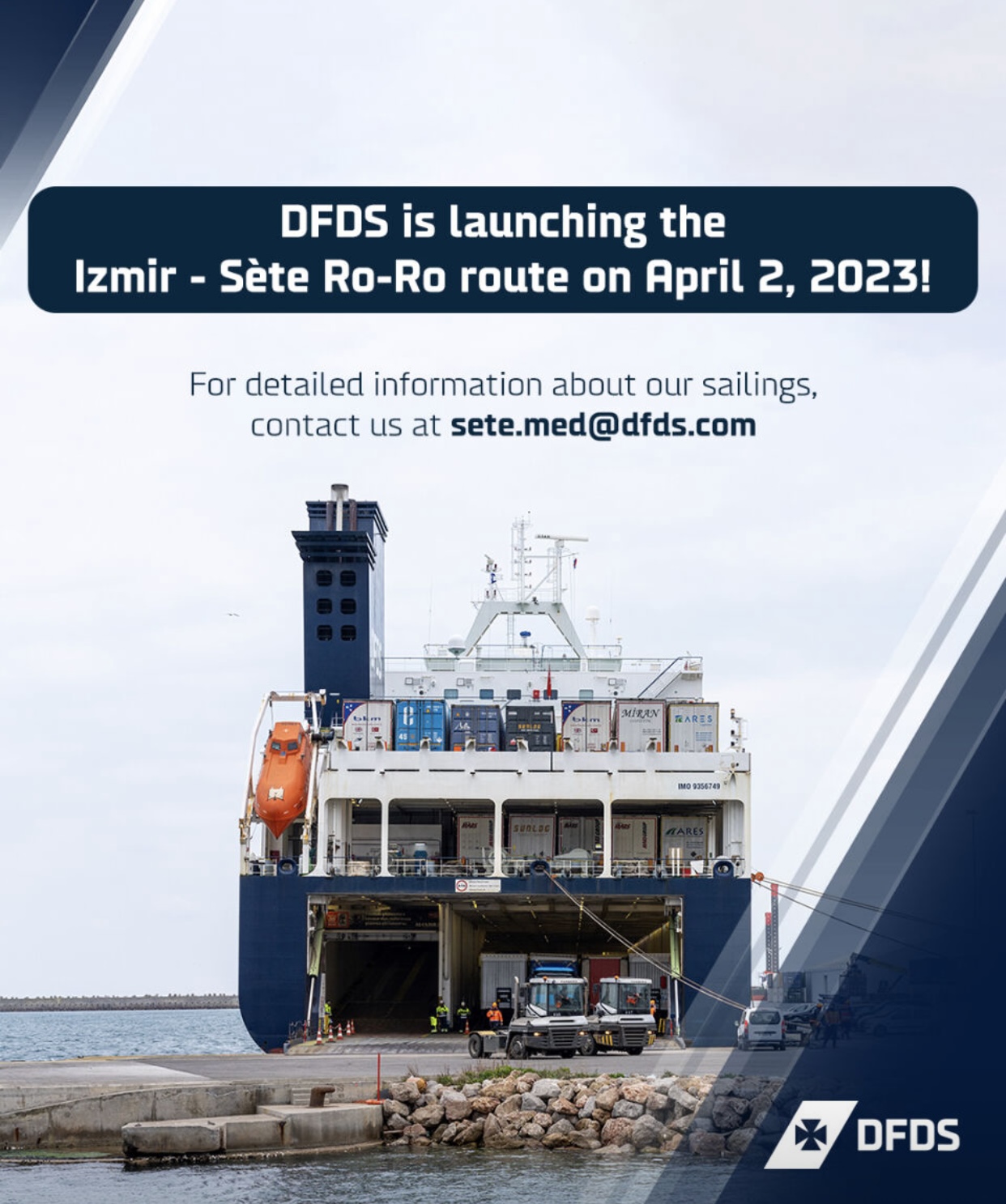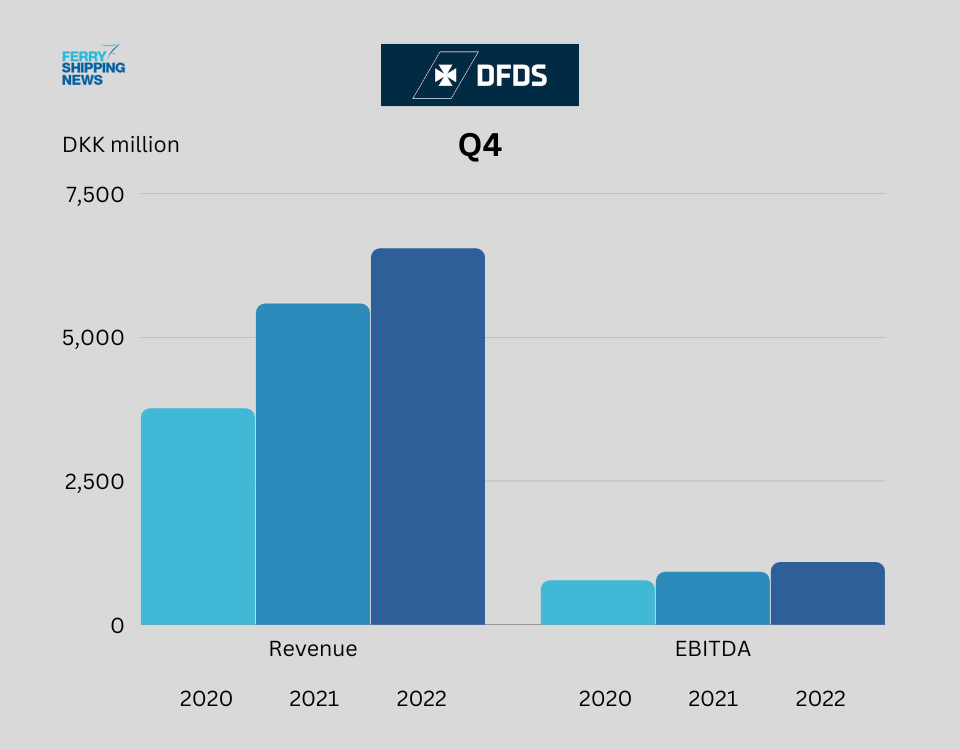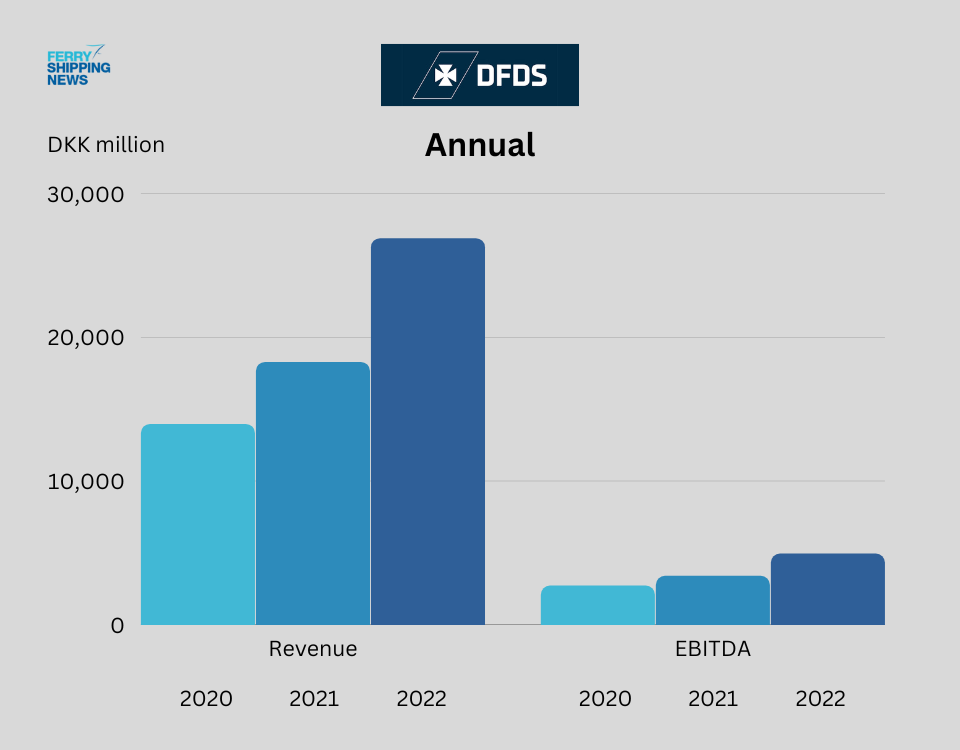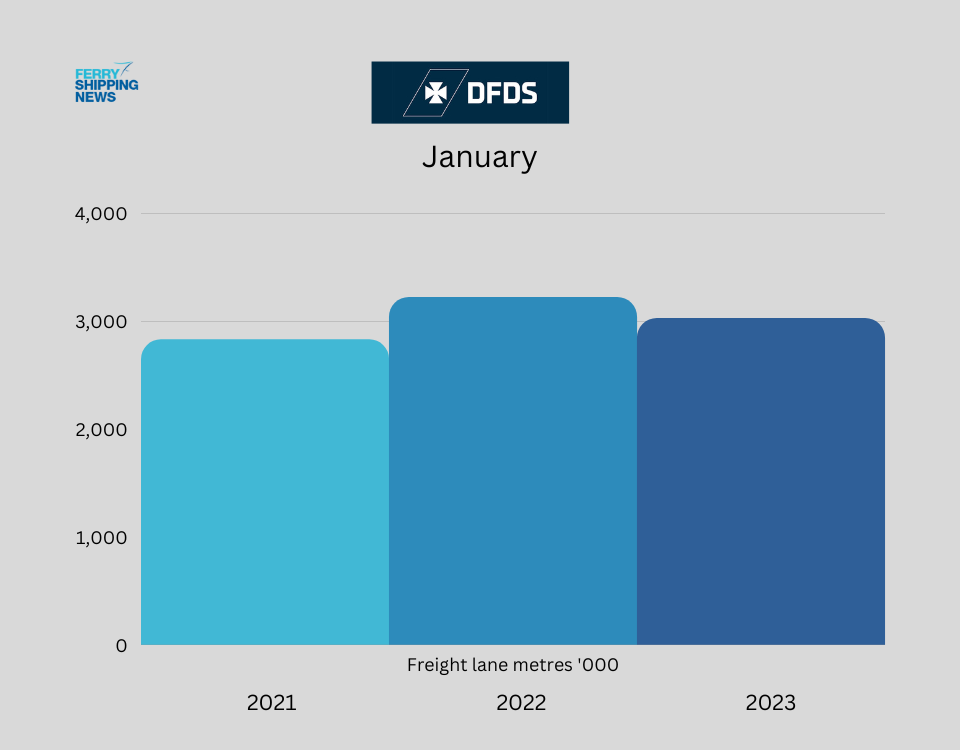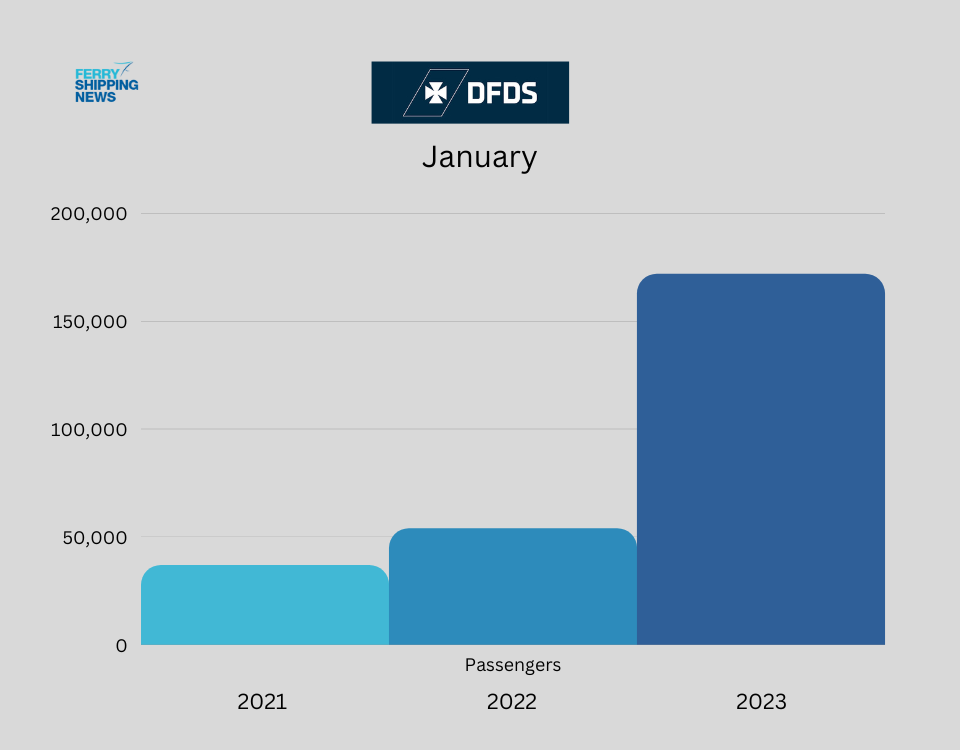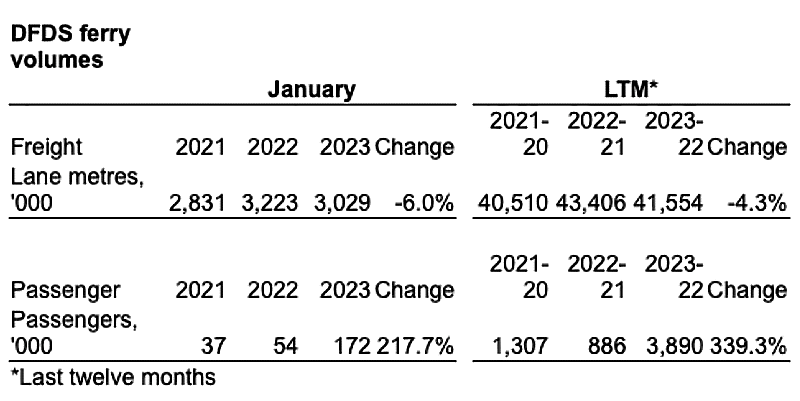Ferry – freight:
Total volumes in November 2022 were 12.0% below 2021. Volumes were 3.7% below 2021 adjusted for Channel that is impacted by a considerable total market decrease and overcapacity.
North Sea volumes were lowered by a temporary reduction in ferry capacity and continued supply chain disruptions for some automotive customers. Mediterranean volumes kept on growing in November, while Baltic Sea volumes remained negatively impacted by the war in Ukraine.
For the last twelve months 2022-21, the total transported freight lane metres decreased 2.4% to 42.2m from 43.3m in 2021-20. The decrease was 0.5% adjusted for Channel.
Ferry – passenger:
The number of passengers continued to recover and increased 119% to 179k equal to 80% of volumes in November 2019, the latest comparable month pre-Covid-19. The number of cars equalled 89% of volumes in 2019.
For the last twelve months 2022-21, the total number of passengers was 3.5m compared to 0.9m in 2021-20 and 5.1m in 2019.








